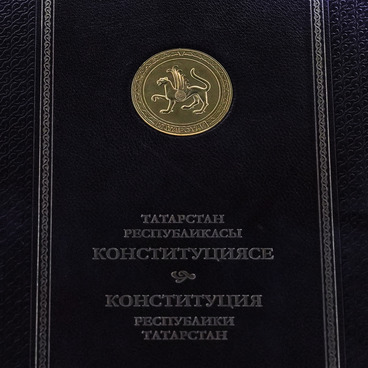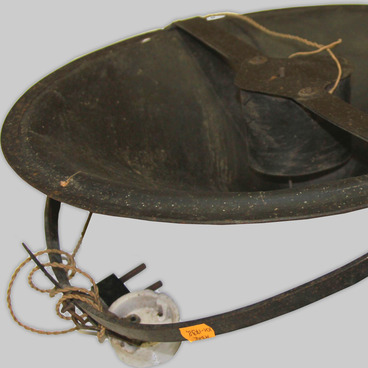The Order of the October Revolution of 1970 is kept in the Museum of the History of Tatar Statehood and the Republic of Tatarstan.
The USSR government established the order in 1967 in honour of the 50th anniversary of the October Revolution. It was an award ‘for active revolutionary activity, contribution to the formation and strengthening of Soviet power, services in building socialism and communism, outstanding achievements in the development of the national economy, science and culture’. It could be received by both citizens of the USSR and foreigners, as well as Soviet enterprises, institutions, organizations and other collectives of workers, military units and formations, republics, territories, regions and cities. Order No. 1 was awarded to the city of Leningrad, and Order No. 2 to Moscow. In the table of ranks of the Soviet award system, the medal took second place after The Order of Lenin.
In June 1970, Tatarstan received the Order of the October Revolution to commemorate the 50th anniversary of the TASSR. The government gave the region an award for ‘outstanding successes achieved in the development of the national economy and socialist culture’. On behalf of the region, the ceremony was attended by the First Secretary of the Tatar Regional Party Committee Fikrat Tabeev and the Chairman of the Presidium of the Supreme Soviet of the TASSR Salikh Batyev. The award was presented by the Secretary of the CPSU Central Committee Andrei Kirilenko.
The order was made as a five-pointed star covered with gold and red enamel. There was an image of a flag with the inscription ‘October Revolution’ in the upper part. There was a silver pentagon with the image of the cruiser Aurora in its centre. There were overhead hammer and sickle — symbols of Soviet power and the world communist movement — in the lower part. They stood for the unity of workers and peasants and were located on the State Flag of the Soviet Union.
The order was connected to a pentagonal red ribbon by the eyelet and a ring. There were five narrow longitudinal blue stripes in the middle of the ribbon. The five-pointed star was a symbol of triumph of the ideas of communism at the five inhabited continents of the globe.
The last awarding took place in December 1991 — the order was received by Atmagambet Oinarbaev, Head of the Kazakh Mining and Geological Expedition of the ‘Building Materials’ group of companies.
The USSR government established the order in 1967 in honour of the 50th anniversary of the October Revolution. It was an award ‘for active revolutionary activity, contribution to the formation and strengthening of Soviet power, services in building socialism and communism, outstanding achievements in the development of the national economy, science and culture’. It could be received by both citizens of the USSR and foreigners, as well as Soviet enterprises, institutions, organizations and other collectives of workers, military units and formations, republics, territories, regions and cities. Order No. 1 was awarded to the city of Leningrad, and Order No. 2 to Moscow. In the table of ranks of the Soviet award system, the medal took second place after The Order of Lenin.
In June 1970, Tatarstan received the Order of the October Revolution to commemorate the 50th anniversary of the TASSR. The government gave the region an award for ‘outstanding successes achieved in the development of the national economy and socialist culture’. On behalf of the region, the ceremony was attended by the First Secretary of the Tatar Regional Party Committee Fikrat Tabeev and the Chairman of the Presidium of the Supreme Soviet of the TASSR Salikh Batyev. The award was presented by the Secretary of the CPSU Central Committee Andrei Kirilenko.
The order was made as a five-pointed star covered with gold and red enamel. There was an image of a flag with the inscription ‘October Revolution’ in the upper part. There was a silver pentagon with the image of the cruiser Aurora in its centre. There were overhead hammer and sickle — symbols of Soviet power and the world communist movement — in the lower part. They stood for the unity of workers and peasants and were located on the State Flag of the Soviet Union.
The order was connected to a pentagonal red ribbon by the eyelet and a ring. There were five narrow longitudinal blue stripes in the middle of the ribbon. The five-pointed star was a symbol of triumph of the ideas of communism at the five inhabited continents of the globe.
The last awarding took place in December 1991 — the order was received by Atmagambet Oinarbaev, Head of the Kazakh Mining and Geological Expedition of the ‘Building Materials’ group of companies.



